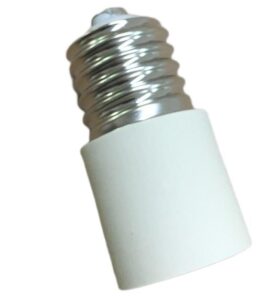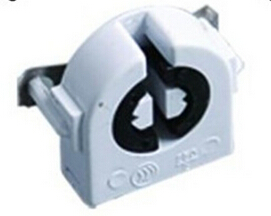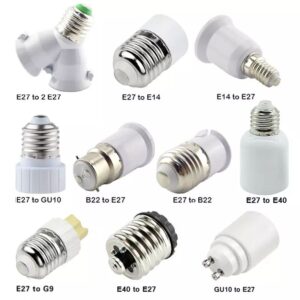Many people struggle to differentiate between various bulb bases, which can lead to purchasing the wrong product. Fortunately, understanding the simple terminology can prevent such errors.
No, E12 is not a medium base. E12 refers to a candelabra base, which is smaller than a medium base (E26). It is commonly used for decorative lighting such as chandeliers and nightlights.
To explore further, let’s discuss how to identify an E12 base and how it compares with other bases.
How to Tell if an E12 Base?
E12 is known as a candelabra base, characterized by its smaller size and typical use in decorative fixtures. The “E” in E12 stands for Edison, referring to the screw-in style, and “12” indicates the diameter in millimeters, which is 12 mm across the base. You can distinguish an E12 base by its compact form, which is notably slimmer compared to standard medium-sized bases like E26.
To identify an E12 base, check the bulb’s packaging or consult the manufacturer’s specifications. The base will often be described as a candelabra screw base, common in applications where the bulb is more ornamental, such as in chandeliers, pendant lights, or night lamps.

What Does E12 Mean on a Light Bulb?
When you see “E12” on a light bulb, it indicates the type of base it has. The “E” refers to the Edison screw-in base, a widely used design for attaching bulbs to sockets. The number “12” specifies the base’s diameter in millimeters.
This type of bulb is often smaller and used for decorative lighting. It is important to note that the E12 base fits specific fixtures, particularly those where space is limited, such as in ornamental lighting, nightlights, or wall sconces.
Is E12 a Standard Bulb Size?
E12 is a standard size, but it is not considered a “medium” base. Medium bases, like the E26, are more commonly used in general lighting applications, such as in ceiling lights and table lamps. In contrast, E12 is categorized as a candelabra base, specifically for smaller, decorative light fixtures.
While not as universal as the medium base (E26), E12 is still a standard size within the category of smaller light bulb bases. It’s commonly used in the U.S. and Europe, especially in decorative applications such as chandeliers and decorative wall sconces.
What Is the Diameter of an E12 Light Bulb Base?
The diameter of an E12 light bulb base is 12 millimeters. This small size makes it ideal for use in decorative lighting fixtures where a slim, compact bulb is required.
E12 bulbs are often used in chandeliers, ceiling fans, or holiday lights, where the smaller size allows for a more elegant design. They are significantly smaller than the typical E26 base, which measures 26 millimeters in diameter and is used for larger, general-purpose lighting.

What Is an E14 Bulb?
An E14 bulb has a slightly larger base than the E12, measuring 14 millimeters in diameter. It is more commonly found in Europe, whereas the E12 is more prevalent in North America. Both bases are screw-in types, and while E14 is slightly larger, it is still classified within the smaller “candelabra” base category.
E14 bulbs are used similarly to E12 bulbs, in decorative fixtures such as chandeliers and pendant lights. The difference in base size between E12 and E14 means they are not interchangeable without an adapter.
Can I Use E14 Instead of E12?
No, you cannot use an E14 bulb in an E12 socket directly. The diameters of the two bases are different, with E14 being slightly larger (14 mm) than E12 (12 mm). However, adapters are available that allow an E14 bulb to fit into an E12 socket.
Always verify compatibility before switching between the two to ensure a proper fit. Using the wrong base can lead to electrical issues or damage to the fixture.
Can I Use an E26 Bulb in an E12 Socket?
No, an E26 bulb cannot be used in an E12 socket. The sizes of the two bases are vastly different, with E26 being much larger (26 mm in diameter) than E12 (12 mm). These two sizes cater to different types of fixtures, with E26 commonly used for general lighting and E12 for decorative fixtures.
Attempting to use an E26 bulb in an E12 socket could cause damage or electrical issues, and it simply won’t fit without an adapter. It’s important to use the correct base size for safety and optimal performance.

Are B11 and E12 the Same?
B11 refers to the shape of the bulb, while E12 refers to the base size. A B11 bulb has a bullet-like shape, which is commonly used in decorative lighting. An E12 base refers to the 12 mm screw-in base that fits into compatible sockets.
B11 bulbs often come with E12 bases, but it’s important to differentiate between the bulb shape (B11) and the socket size (E12). Always check both specifications to ensure compatibility with your fixture.
Is There a Smaller Base Than E12?
Yes, there are smaller bases than E12. One example is the E10 base, often referred to as a miniature screw base, which has a diameter of 10 millimeters. E10 bulbs are typically used in smaller applications, such as flashlights or decorative holiday lights.
E5.5, another small base size, is used in specialty applications like instrument panel lighting. While E12 is small and common in decorative lighting, several even smaller bases are used in niche applications.
E12 is a candelabra base, not a medium base. Always match the base size to your fixture for proper use.













